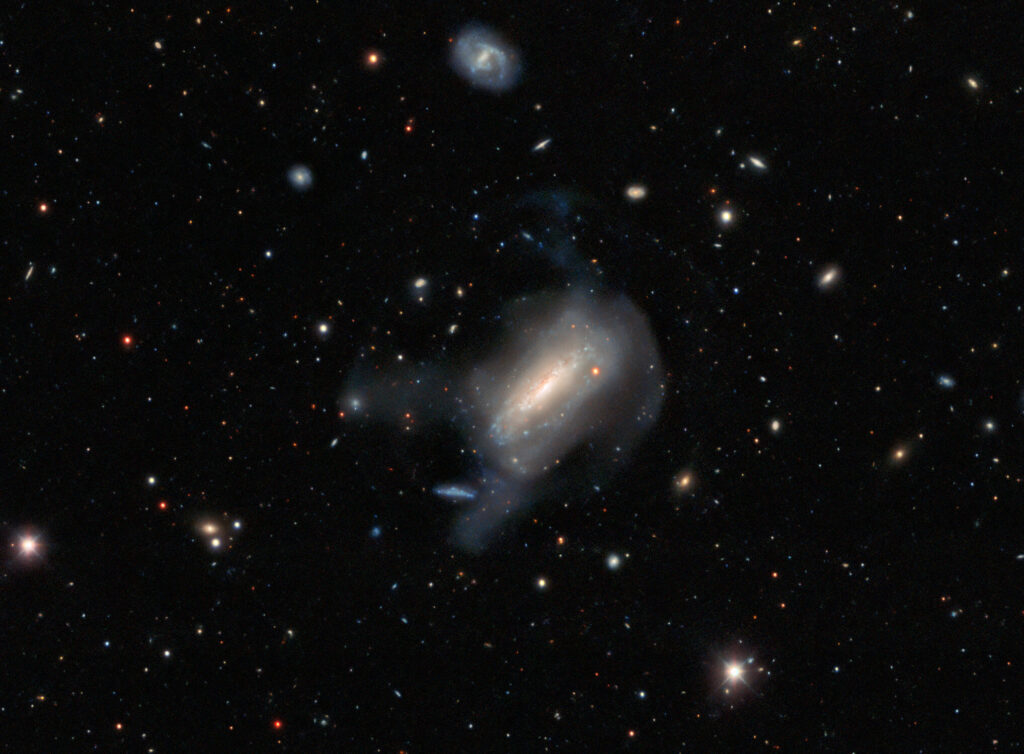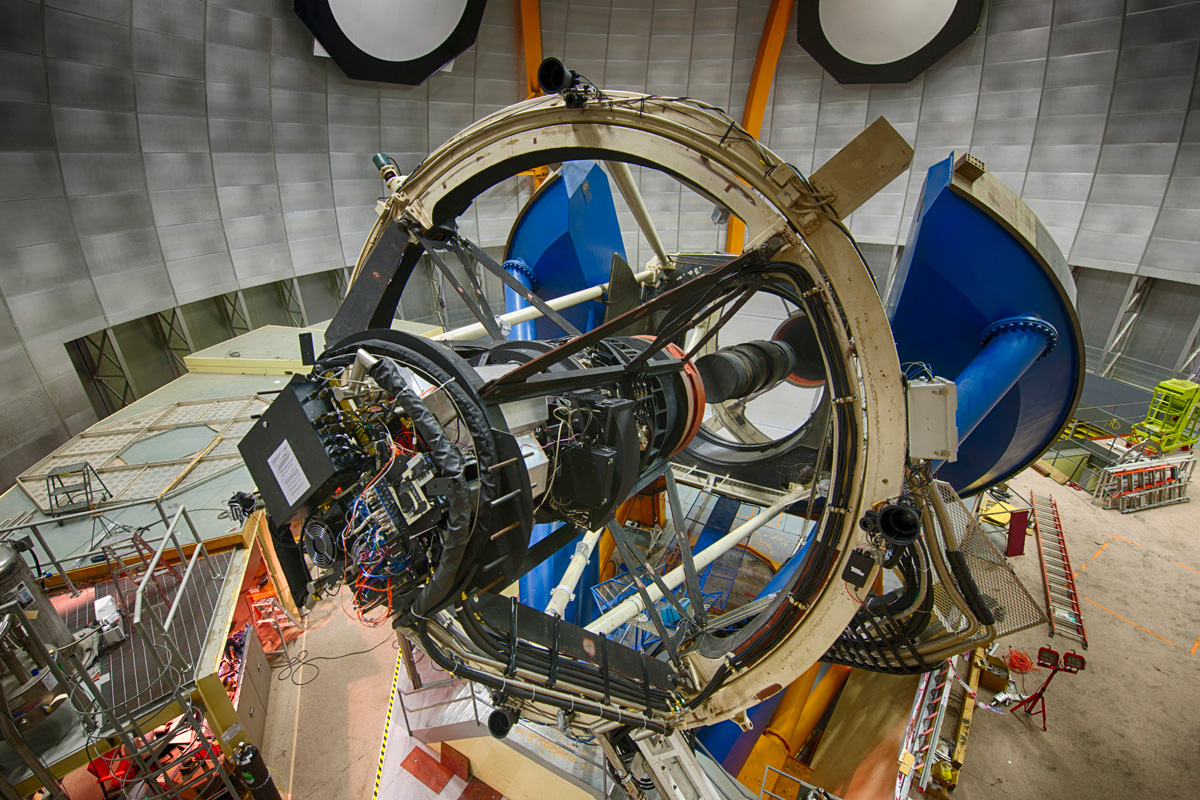The presented image was obtained by the Dark Energy Camera (DECam) installed on the 4-meter Victor Blanco Telescope at the Cerro Tololo Inter-American Observatory in Chile. It shows the galaxy NGC 4495.

The galaxy NGC 4495 is located at a distance of 200 million light-years from Earth in the direction of the constellation Coma Berenices. It is notable for the fact that over the past thirty years at least three supernovae have flared up in it — in 1994, 2010 and 2011. Interestingly, they had a different nature. The supernova 1994 broke out due to the fact that the white dwarf absorbing the matter of the companion star gained too much mass, exceeding the Chandrasekhar limit. This led to its thermonuclear explosion. At the same time, the cause of the 2011 supernova outbreak was the collapse of a massive star.
The constellation Coma Berenices, in which the galaxy NGC 4495 is located, also has one curious feature. This is the only one of the 88 constellations named after a person who actually lived — Berenice (Veronica), the wife of the Egyptian king Ptolemy III (III century BC). When her husband went on a military campaign, she cut off her hair and placed it in the temple of Aphrodite. According to legend, the hair disappeared mysteriously and the court astronomer explained this by saying that they were placed in the sky and became new stars. Later, they were assigned the name Veronica’s Hair (Coma Berenices), which eventually passed to the constellation.
Mechanism and purpose of the Dark Energy Camera
The Dark Energy Camera is one of the most advanced astronomical instruments of our time. It collects the light reflected by the 4-meter mirror of the Victor Blanco telescope and passes it through its insides, including a meter-long corrective lens. It is then captured by a grid of 62 devices with extremely sensitive CCD-matrices. They allow DECam to create detailed images of faint astronomical objects like NGC 4495.

DECam was created for the 2013 to 2019 DES review. During this experiment, astronomers were mapping hundreds of millions of galaxies and thousands of supernovae to detect subtle patterns of cosmic structure. This was required to obtain information about the nature of the mysterious dark energy that accelerates the expansion of the universe. Today, DECam is still actively used by astronomers from all over the world, continuing to remain at the forefront of science.
Earlier we talked about how DECam photographed a pair of interacting galaxies.
Follow us on Twitter to get the most interesting space news in time
https://twitter.com/ust_magazine
